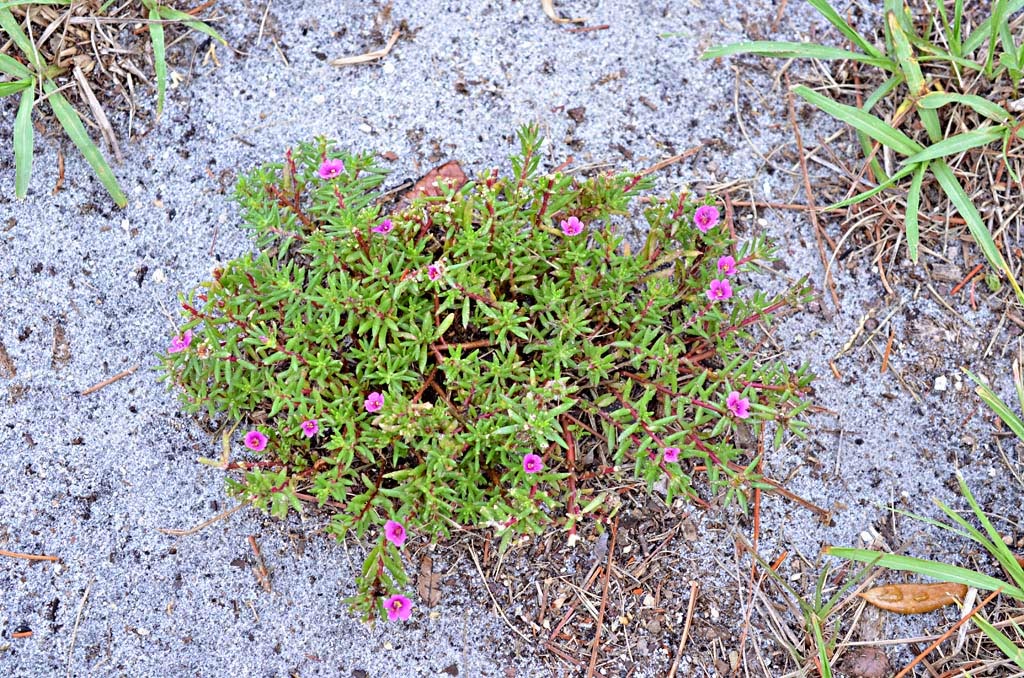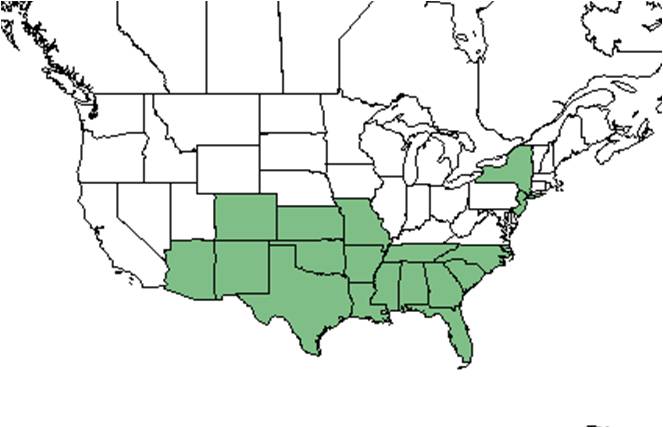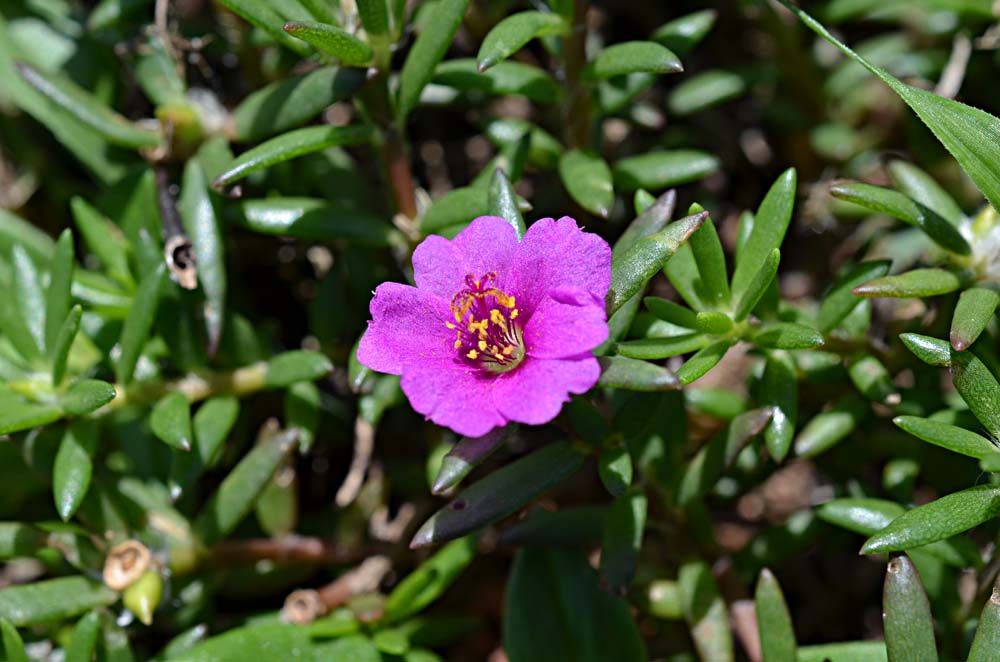Portulaca pilosa
| Portulaca pilosa | |
|---|---|

| |
| Photo by Wayne Matchett, SpaceCoastWildflowers.com | |
| Scientific classification | |
| Kingdom: | Plantae |
| Division: | Magnoliophyta - Flowering plants |
| Class: | Magnoliopsida – Dicotyledons |
| Order: | Caryophyllales |
| Family: | Polygonaceae |
| Genus: | Portulaca |
| Species: | P. pilosa |
| Binomial name | |
| Portulaca pilosa L. | |

| |
| Natural range of Portulaca pilosa from USDA NRCS Plants Database. | |
Common names: Kiss-me-quick, Chisme, Pink purslane
Contents
Taxonomic notes
Synonym: Portulaca mundula I.M. Johnston
Portulaca is the old Latin name for purslane, referring to the milky sap. Pilosa is Latin for hairy.[1]
Description
A description of Portulaca pilosa is provided in The Flora of North America.
Portulaca pilosa has small terete leaves and small lavender-pink flowers, while P. amilis has larger succulent flat leaves and large orange-red flowers.[2]
Distribution
Ecology
Habitat
In the Coastal Plain in Florida, P. pilosa occurs on river sandbars, along highways, lawns, disturbed wet sands of river bays, sandy roadways, and dry loamy sand in parking lots. Soil types include loamy sand, sand and fine gravel. Associated species include Portulaca amilis, Chamaesyce, and Solidago altissima.[2]
Phenology
P. pilosa has been observed to flower in June[3] and July.[2] In Mexico and the lower southeastern U.S., it is a tetraploid; in the southeast it is a diploid.[4]
Under low light intensity and temperatures, flowers can not open, this results in a tendency towards cleistogamy, and encourages selfing.[5]
Seed bank and germination
It can lie dormant in the seed bank for up to 40 years before sprouting.[6] Light is required for germination.[5]
Pollination and use by animals
Portulaca pilosa was observed at the Archbold Biological Station with sweat bees from the Halictidae family such as Lasioglossum tamiamensis.[7]
Conservation, cultivation, and restoration
Cultural use
Photo Gallery
Flowers of Portulaca pilosa Photo by Wayne Matchett, SpaceCoastWildflowers.com
References and notes
- ↑ [[1]]Some Magnetic Island. Accessed: March 1, 2016
- ↑ 2.0 2.1 2.2 Florida State University Robert K. Godfrey Herbarium database. URL: http://herbarium.bio.fsu.edu. Last accessed: November 2015. Collectors: Loran C. Anderson, Robert K. Godfrey, R.A. Norris. States and Counties: Florida: Calhoun, Franklin, Gadsden, Gulf, Jefferson, Liberty, Volusia, Wakulla, Washington. Compiled by Tall Timbers Research Station and Land Conservancy
- ↑ Nelson, G. PanFlora: Plant data for the eastern United States with emphasis on the Southeastern Coastal Plains, Florida, and the Florida Panhandle. www.gilnelson.com/PanFlora/ Accessed: 13 DEC 2016
- ↑ Matthews, J. F., D. W. Ketron, et al. (1992). "The reevaluation of Portulaca pilosa and P. mundula (Portulacaceae)." SIDA, Contribution to Botany
- ↑ 5.0 5.1 Zimmerman, C. A. (1977). "A Comparison of Breeding Systems and Seed Physiologies in Three Species of Portulaca L." Ecology 58(4): 860-868.
- ↑ [[(1) http://articles.orlandosentinel.com/2011-07-25/news/os-lk-sherry-boas-072511-20110725_1_purslane-portulaca-seeds]]Orlando Sentinel. Accessed: March 1, 2016
- ↑ Deyrup, M.A. and N.D. 2015. Database of observations of Hymenoptera visitations to flowers of plants on Archbold Biological Station, Florida, USA.
